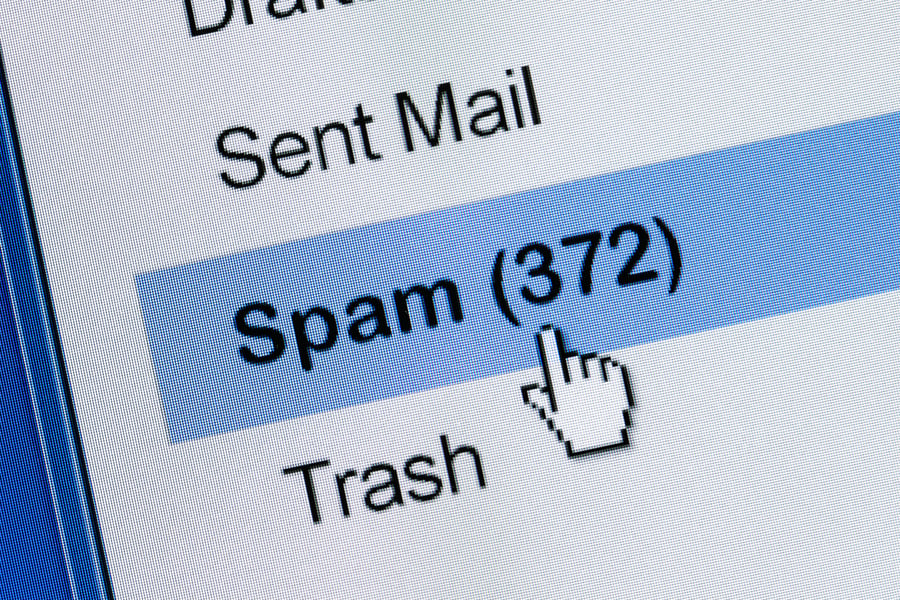
What exactly is email deliverability? Quite simply, it is the rate at which your emails go to their intended target. In pretty much all cases, this target is going to be a recipient’s inbox. So, versus going to a person’s spam or somehow otherwise getting blocked, the email actually makes it all the way to its destination: the inbox.
Every email marketer’s dream is to have an email successfully arrive in an inbox. And what’s more, from that point, have that email actually get opened. Then of course, the triumphant moment is when an email is read and the user heeds the call to action. Mission accomplished!
In this article, we'll discuss how to succeed at this all-important marketing goal.
Giving Your Email a Better Chance of Being Read
In order for an email to be read, it stands to reason that it first and foremost has to be delivered. So what are some ways that you can increase your chances of email delivery? How might you improve the rate at which emails you send are actually reaching that endzone? Below we review 10 methods for helping up the odds that your email will get delivered and not get detoured into that dreaded spam folder.
1. Double Check Your Opt-In Process
 In other words, are you randomly sending emails to users who never subscribed to your email list? Are some people unaware that they are even on your list? If this is the case, then there is a very good chance your emails will never see the light of day. What will inevitably happen if you are in fact emailing unsubscribed people is that they will mark your messages as spam. And then you start to create a detrimental domino effect.
In other words, are you randomly sending emails to users who never subscribed to your email list? Are some people unaware that they are even on your list? If this is the case, then there is a very good chance your emails will never see the light of day. What will inevitably happen if you are in fact emailing unsubscribed people is that they will mark your messages as spam. And then you start to create a detrimental domino effect.
If a couple of users mark the message as spam, then ISPs will start to mark all such emails as spam. And soon, nothing is being delivered. The key point here, check your opt-in process to ensure that you are not somehow sending emails to those who are not aware that they are on your list. Integrating a double opt-in or a confirmed opt-in system can really help ensure that those who are being seen as subscribed, legitimately want to subscribe. There are plenty of techniques to build an email mailing list.
2. Start with Small Batches

If you suddenly start to send out major batches of emails, the ISPs (Internet Service Providers) will quickly come to distrust you. And this is when they designate anything coming from you as spam. One of the primary defensive jobs of an ISP is to block spam. To this end, you need to get ISPs to trust that what you are sending is not in fact spam.
One way to do this is to begin small. Send out a few targeted emails; ensure that they reach their destination. And as users do come to receive and open the emails, then ISPs will gain more confidence in you. As that confidence level grows, you can gradually increase the number of emails you send out. However, again, try and refrain from just doing a massive blast all at once. This can quickly undo all of the hard work you’ve done.
3. Pay Attention to the Subject Line
 ISPs will, to some extent, flag a message as spam given trigger words within the subject line. Of course, the goal of a subject line is to entice a user to go ahead and open your email. And so, you do need to be clever and creative where subject lines are concerned. Whatever you do, do not leave a subject line out. Many experts concur that in some ways the subject line is actually the most important part of the email. That said, you want to try and avoid certain words that read as overly “spammy.” This includes terms/phrases such as “free,” “eliminate debt,” and “lowest price.” You can still be creative with writing catchy subject lines.
ISPs will, to some extent, flag a message as spam given trigger words within the subject line. Of course, the goal of a subject line is to entice a user to go ahead and open your email. And so, you do need to be clever and creative where subject lines are concerned. Whatever you do, do not leave a subject line out. Many experts concur that in some ways the subject line is actually the most important part of the email. That said, you want to try and avoid certain words that read as overly “spammy.” This includes terms/phrases such as “free,” “eliminate debt,” and “lowest price.” You can still be creative with writing catchy subject lines.
Use your judgement. Think about your target reader — what would intrigue them? What might make them curious enough to open your email? On the flip side, what kinds of words might turn them off and get you sent to the spam folder?
4. Be Aware of Your Sender Reputation
 There is a sender score associated with your IP address. Are you aware of where that score currently stands? The lower the score, the greater the chance an ISP will mark your emails as spam. Very much like a credit score, Sender Score is a measure of your validity and reputation as an email sender. You can go to SenderScore.com in order to get the information you need and thereby gain some insight into how ISPs view you.
There is a sender score associated with your IP address. Are you aware of where that score currently stands? The lower the score, the greater the chance an ISP will mark your emails as spam. Very much like a credit score, Sender Score is a measure of your validity and reputation as an email sender. You can go to SenderScore.com in order to get the information you need and thereby gain some insight into how ISPs view you.
This score is generated using things such as spam reports and unsubscribe rates. Knowing what your score is can help you figure out what you might need to do in order to boost that number. A higher score (the highest is 100) means that your emails are more likely to be delivered.
5. Watch Out for Those Spam Traps
 What is a spam trap? Essentially, just as it sounds: a trap set up to lure in spammers and thereby more readily identify them. These are most often created by ISPs and some corporations. They are used to see if you are engaging in questionable means to gather contact info. Also, if you purchase an email list, this could very well contain the dreaded spam trap.
What is a spam trap? Essentially, just as it sounds: a trap set up to lure in spammers and thereby more readily identify them. These are most often created by ISPs and some corporations. They are used to see if you are engaging in questionable means to gather contact info. Also, if you purchase an email list, this could very well contain the dreaded spam trap.
Once you fall victim to a spam trap, your IP could be ruined for life. You’re flagged and your emails are likely destined straight for spam. Email deliverability will be in definite trouble. So avoiding such spam traps is crucial!
6. Have a Regular Schedule
 Sending out emails sporadically and/or at random times does nothing to help your deliverability rate. If for instance, you generally send out emails during weekday mornings, but then suddenly decide to send out a batch in the middle of the night on a Saturday, this will be seen as irregular activity by ISPs. And irregular activity as far as they’re concerned equates to spam most of the time. End result: email not delivered.
Sending out emails sporadically and/or at random times does nothing to help your deliverability rate. If for instance, you generally send out emails during weekday mornings, but then suddenly decide to send out a batch in the middle of the night on a Saturday, this will be seen as irregular activity by ISPs. And irregular activity as far as they’re concerned equates to spam most of the time. End result: email not delivered.
Establish a pattern for sending your emails and stick to it in order to forge a better, more trusted relationship with those ISPs. This isn’t just good practice as far as cultivating ISP favorability, but in general, having a consistent schedule makes things a lot easier on you as well.
7. Revisit Your Email List from Time to Time
 How old is your subscriber list? People’s emails do change. Old emails get discarded, but if those old emails are still on your list, this can actually cause problems for you. What happens when you send emails to old and outdated addresses is your bounce rate goes up. The higher your overall bounce rate, the more likely that your email will be identified as spam. Every so often it is important to purge that list. Get rid of those who are not opening any of your emails.
How old is your subscriber list? People’s emails do change. Old emails get discarded, but if those old emails are still on your list, this can actually cause problems for you. What happens when you send emails to old and outdated addresses is your bounce rate goes up. The higher your overall bounce rate, the more likely that your email will be identified as spam. Every so often it is important to purge that list. Get rid of those who are not opening any of your emails.
You might even enlist the help of an email validation service — especially if your subscriber list is relatively long. There are plenty of such services available online. And if you do opt to go with an email validation service, they not only identify email addresses no longer in use but can also help get rid of spam traps as well.
8. Create an Engaging Email
 Sounds simple enough, right? The more likely users are to open and read and consequently engage with your email, the greater the chance ISPs will look favorably upon what you send out. All parts of your email should really speak to the reader in question. From the intriguing subject line to the body of the email to any links you might include, you want to give them something that is interesting to read and also potentially helpful in some way.
Sounds simple enough, right? The more likely users are to open and read and consequently engage with your email, the greater the chance ISPs will look favorably upon what you send out. All parts of your email should really speak to the reader in question. From the intriguing subject line to the body of the email to any links you might include, you want to give them something that is interesting to read and also potentially helpful in some way.
If your emails are constantly going unopened, or worse, if a user reads one and frustrated by it, proceeds to move all future emails from you to their spam, your deliverability rate will take a hit. Writing the kinds of emails and creating the type of content that people like to read will make a huge difference in how ISPs treat your emails in general.
9. Use Your Company Name in the From Line
 Recipients want to know right away where an email is coming from. For instance, your “from” line would show: Amy from Freshly. Studies have shown that emails with from lines which clearly specify the brand reaching out, do tend to get opened more often. It’s a pretty simple strategy, but a highly effective one. Plus, this does go toward brand building.
Recipients want to know right away where an email is coming from. For instance, your “from” line would show: Amy from Freshly. Studies have shown that emails with from lines which clearly specify the brand reaching out, do tend to get opened more often. It’s a pretty simple strategy, but a highly effective one. Plus, this does go toward brand building.
Not to mention, when you do include your brand’s name in the from section of the email, it is less likely to get rejected as spam. Translation: you now have a much better chance of your email being delivered to the recipient’s inbox. A step that takes a couple of seconds can net you a huge advantage.
10. Give Subscribers a Clear Way to Opt Out

As required by law, all email subscription lists have to offer users an opt-out whenever they choose to do so. The CAN-SPAM Act actually mandates that you have to provide this, otherwise you are in violation of a legal statute. Some companies try and get clever here and make it essentially impossible for users to find where and how to opt out. They are basically trying to trap that subscriber into staying a subscriber.
The problem however then becomes the user gets disgruntled. They can’t clearly figure out how to unsubscribe and so they just start sending your emails directly to spam. They may even go so far as to report the emails. This does you no favors with ISPs, and your Sender Score plummets. Making opting out as easy as possible — even by way of a one-click process — will help you keep that score up and your emails will continue to get delivered to those who want them.
In Conclusion…
Sure, it may be tempting to break a few of these “rules.” Sending out huge batches of emails at any one time is something of which many brands are guilty. Purchasing what seem to be ready-made email lists and therefore not having to wait on your own to grow can be a very tempting prospect. And throwing words like “free” and “cheap” in a subject line in hopes of appealing to a person’s instinct to find that amazing deal, is a strategy that many use. The problem with some of these tactics is that they do get you in trouble.
Just as with most things, credibility and trustworthiness in marketing are key. You therefore want to cultivate an email strategy that works to earn your subscribers’ trust. Their opinion of your email campaign really does make all the difference when it comes to deliverability rates. Think carefully through how you want to approach email marketing versus going with knee-jerk reactions that are likely to just get you lumped in with the rest of the spam.





Leave a reply or comment below